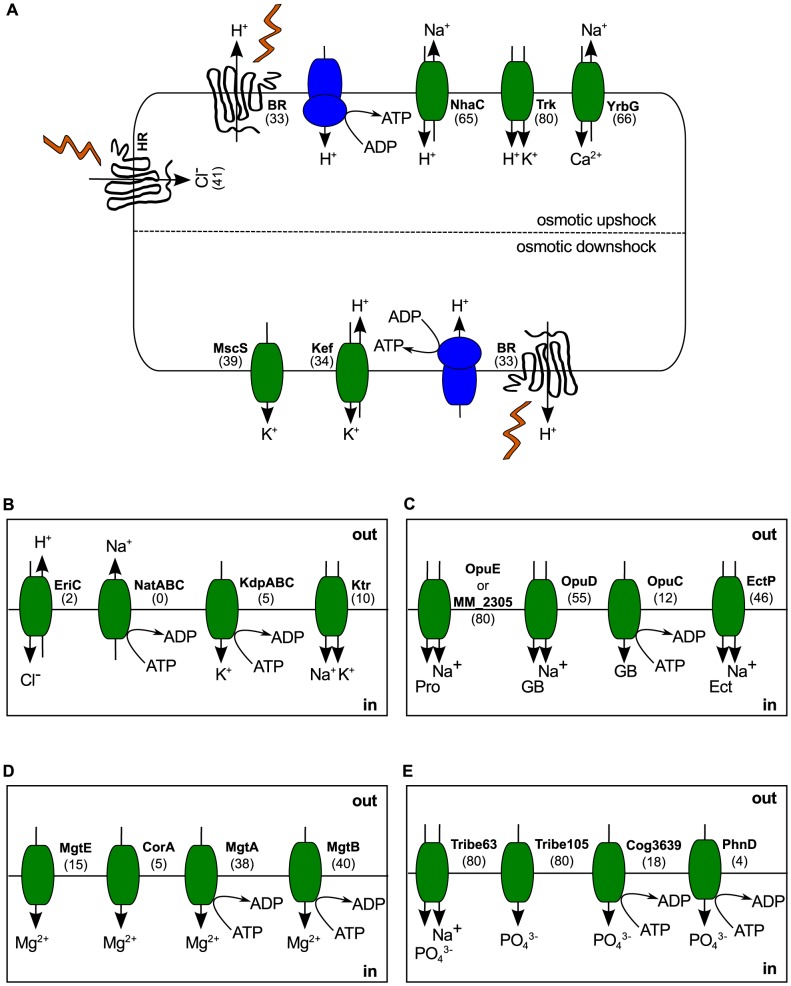Figure 4. Haloarchaeal osmoadaptation.
(A) Generalized model for osmoadaptation in the haloarchaea. During osmotic upshock, potassium is imported through Trk H+/K+ symporters and Na+ is expelled using a combination of NhaC H+/Na+ antiporters and/or YrbG Ca2+/Na+ antiporters. During osmotic downshock, excess potassium is removed through a combination of Kef H+/K+ antiporters and the non-specific mechanosensitive channel MscS. (B) Ion transport strategies not generally encoded by the haloarchaea. Sodium export and potassium import using ABC transporters (NatABC and KdpABC) may be less energetically efficient than secondary transport systems. Use of Ktr K+/Na+ symporters for potassium uptake would result in over-accumulation of sodium. (C) Compatible solute transport systems. Na+/proline symporters (OpuE and MM_2305) are ubiquitous in the haloarchaea. Glycine betaine uptake is mediated by OpuD through symport with sodium or, rarely, through the ABC transporter OpuC. The ectoine/sodium symporter EctP is also widespread. For transport systems with multiple substrates, a representative compound is shown. (D) Magnesium uptake is mediated by primary active transport (MgtA/B) or, rarely, by facilitated diffusion (MgtE/CorA). (E) Potassium accumulation is possible in all 80 haloarchaea via both secondary active transport (Tribe63) and facilitated diffusion (Tribe105). Some species also possess ATP-dependent potassium transporters (Cog3639/PhnD). Numbers in parenthesis represent the number of haloarchaeal species possessing the transporter gene. BR – bacteriorhodopsin, HR – halorhodopsin, GB – glycine betaine, Pro - proline, Ect – ectoine. Kef, Ktr and Trk each represent a class of transporters, rather than a single homolog. Tribe63 and Tribe105 refer to protein families defined in this study.

